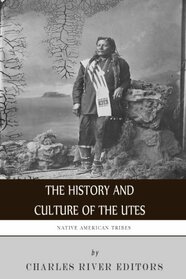Frankly, this is a fairly depressing tale of the US government robbing another group of American Indians. Fortunately, by the end, we see that the Utes are coming back with an increasing population. They reside in Colorado, New Mexico, and Utah. They have the second-largest Indian reservation in the US (the Navajo have the largest). The photos of so many Utes were wonderful; as the book states, they are handsome people.
The Utes do not have an origin narrative that includes migration from another place, thus, it is felt that they were originally in the lands mentioned above. The Utes belong to the Uto-Aztecan language family, which includes the desert-dwelling Southern Paiutes, the pueblo-dwelling Hopi, and the empire-building Aztecs in Mexico. A few Utes grew gardens of corn, beans, melons, and squashes, but most were hunter/gatherers. Their lives changed when the Spaniards brought horses in the 1600s.
Much of the book is the depressing story of dishonest dealings and treaties from the US government. There is an interesting section about the interaction between the Mormons and the Utes. The Utes, like many other tribes, were subjected to assimilation boarding schools (for the youngsters). However, the Utes have used the courts to demand their water and land rights and generally have won their cases.
Because of their oil and gas revenues and casino, they are in a much better place economically. With some of that money, they have created a tribal cultural center and museum, to display their proud heritage. Visitors come from all over to learn about Ute's history.
The Utes do not have an origin narrative that includes migration from another place, thus, it is felt that they were originally in the lands mentioned above. The Utes belong to the Uto-Aztecan language family, which includes the desert-dwelling Southern Paiutes, the pueblo-dwelling Hopi, and the empire-building Aztecs in Mexico. A few Utes grew gardens of corn, beans, melons, and squashes, but most were hunter/gatherers. Their lives changed when the Spaniards brought horses in the 1600s.
Much of the book is the depressing story of dishonest dealings and treaties from the US government. There is an interesting section about the interaction between the Mormons and the Utes. The Utes, like many other tribes, were subjected to assimilation boarding schools (for the youngsters). However, the Utes have used the courts to demand their water and land rights and generally have won their cases.
Because of their oil and gas revenues and casino, they are in a much better place economically. With some of that money, they have created a tribal cultural center and museum, to display their proud heritage. Visitors come from all over to learn about Ute's history.




